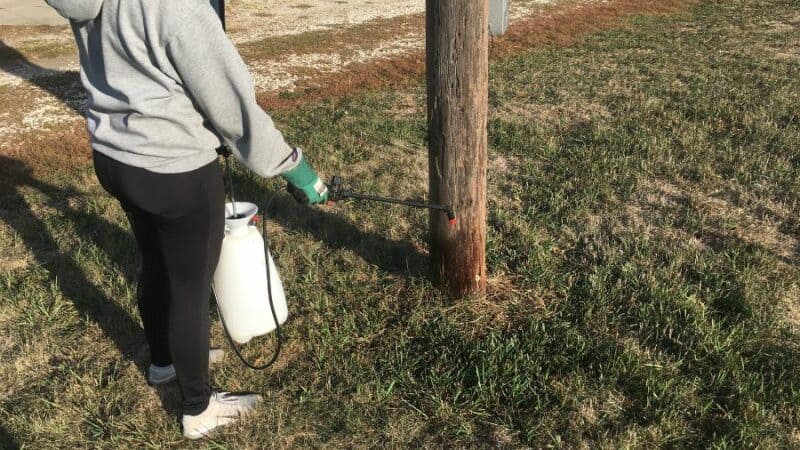Lawn and garden sprayers are essential tools for maintaining healthy lawns and gardens. While these tools are pretty simple in design, they require proper usage to maximize their effectiveness and lifespan. I have been working with these types of sprayers for over a decade and have identified three common mistakes people make with their lawn and garden sprayers. Understanding and avoiding these mistakes can help you get better results and keep your sprayer working longer.
The Three Common Mistakes People Make with Lawn & Garden Sprayers
1. Not Calibrating the Sprayer
One of the most common mistakes is not calibrating the sprayer. Each sprayer has a different maximum pressure and comes with various spray nozzle sizes, which can affect the volume of liquid dispersed. Two similar sprayers operated at their maximum pressure might not deliver the same amount of liquid over the same area, even if you maintain a consistent walking speed and spraying motion. This discrepancy can lead to applying too much or too little product, such as pesticides, herbicides, or fertilizers.
Consequences:
- Uneven application of chemicals can lead to ineffective pest control, over-fertilization, or under-fertilization.
- Wasting expensive products due to over-application.
- Potential damage to plants from incorrect dosages.
Solution:
- Calibrate your sprayer by filling it with water and spraying over a defined area, such as 100 square feet.
- Time yourself while spraying to determine how much liquid is dispersed over that area.
- Compare this with your previous sprayer to understand the differences and adjust your product mixture accordingly.
- Always perform a calibration test when using a new sprayer or switching between different sprayers.
Learn More: How to Calibrate a Lawn & Garden Sprayer
2. Not Cleaning Your Sprayer
Another critical mistake is neglecting to clean your sprayer. Sprayers can easily clog, leak, or crack if not maintained properly. Even inexpensive sprayers can last longer if they are cleaned regularly. Residue from chemicals, including organic compounds, can build up and cause issues with the small components of the sprayer.

Consequences:
- Clogs and leaks can lead to uneven spraying and frustration.
- Cross-contamination between different chemicals, especially herbicides, can damage plants.
- Reduced lifespan of the sprayer, leading to more frequent replacements.
Solution:
- Take apart the sprayer periodically to scrub and rinse all components with fresh water and a suitable tank cleaner.
- Clean the sprayer after each use to prevent residue build-up.
- Use a tank cleaner or neutralizer to avoid cross-contamination, especially after using non-selective herbicides.
- Proper cleaning ensures the sprayer’s longevity and effectiveness.
You can learn more in this complete guide to cleaning a lawn and garden sprayer.
Related: How to Limit The Effect of Pesticides on Your Sprayer
3. Not Checking for Compatibility
Many people fail to check the compatibility of their sprayer with the chemicals they intend to use. Lawn and garden products, whether synthetic or organic, can vary in their chemical composition. The materials used in sprayers, such as rubber and plastic components, may not be compatible with all products, potentially leading to premature wear and damage.
Consequences:
- Certain chemicals can corrode or degrade the sprayer’s components, causing it to fail.
- Incompatible products can quickly ruin the sprayer, leading to costly replacements.
- Frustration and inefficiency from constantly dealing with damaged equipment.
Solution:
- Check the compatibility of the products you plan to use with your sprayer’s materials.
- Learn which chemicals can attack and damage the metal, plastic, and rubber components of your sprayer.
- Choose sprayers made from materials like polyethylene tanks, rubber hoses, and Viton or EPDM rubber O-rings, which are compatible with a wide range of chemicals.
- Consider using separate sprayers for products that are known to be incompatible with your current equipment.
If you are looking for a reliable chemical-resistant sprayer, check out my recommended sprayers page. I have used and tested each one.
Learn More:
Conclusion
By avoiding these top three mistakes—failing to calibrate the sprayer, neglecting to clean it, and not checking for chemical compatibility—you can significantly enhance the performance and lifespan of your lawn and garden sprayers. Proper usage and maintenance not only ensure the effective application of products but also save you money and frustration in the long run. Always remember to calibrate, clean, and check compatibility to get the best results from your lawn and garden sprayers.
Learn More: Lawn Sprayers 101: Everything You Need to Know Before Buying a Sprayer
